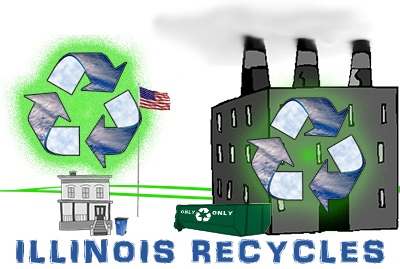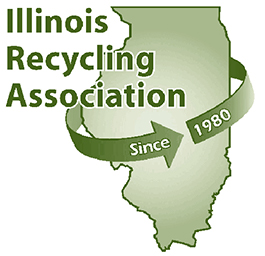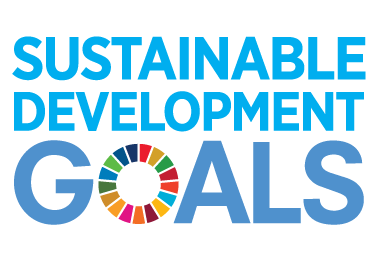WRITTEN BY: Katherine Gardiner, ISTC staff
 Whenever you think of sustainability, the Olympic Games, with all its grandeur and flashy ceremonies, probably is not the first event that comes to mind. All it takes is a second look, though, and you’ll see that sustainability is central to the Olympics.
Whenever you think of sustainability, the Olympic Games, with all its grandeur and flashy ceremonies, probably is not the first event that comes to mind. All it takes is a second look, though, and you’ll see that sustainability is central to the Olympics.
This year, the Olympics are being held in PyeongChang, South Korea. The PyeongChang Organizing Committee for the 2018 Olympic Games (POCOG) has integrated sustainability into all stages of its Games – from construction of the venues, to the athletes’ and fans’ experiences and the legacy the Games will leave.
There are 92 countries and over 2,900 athletes participating in the Winter Olympics in PyeongChang, up from 88 nations in the 2014 Sochi Olympics. That is a lot of people and it is not even counting the enthusiastic fans pouring in from each nation.
It can be a challenge to host so many travelers at once, knowing they will only stay temporarily. POCOG has managed this by constructing an Olympic Village to accommodate the athletes and coaches, and once the Games are over, the Village will be used as condominiums. All the condo units were sold months before the Olympics even started, guaranteeing the Village will be in use long after the athletes have left the city.
The Olympic-sized stadiums have also been developed with green infrastructure and eventual repurposing in mind. POCOG constructed all six new venues to conform to South Korea’s green energy certification standards, G-SEED. The venues utilize solar, wind, and geothermal energy and POCOG repurposed land previously used as a landfill to build the Ice Hockey Arena. After the Games, the arenas will be used for multipurpose sports complexes to accommodate professional athletic training as well as culture, leisure, and sports activities for the public.
POCOG’s sustainability report outlines a goal to go beyond “zero emissions” and accomplish “O2 Plus” effects through “low-carbon operations and resource circulation.” As of September 2017, 1.33 million tons of greenhouse gases were reduced or offset. To reduce greenhouse gas emissions, mass transit transportation has been encouraged. Personal vehicles cannot enter the venues, which encourages fans to park off-site and ride the shuttle. The high-speed railway was also built to connect Incheon International Airport in Seoul to the venues in PyeongChang and Gangneung. Staff will use electric cars and hydrogen-powered cars during the Games. As a result, charging stations have been installed, which POCOG hopes will encourage locals to use electric cars.
To further reduce carbon emissions, POCOG is locally sourcing much of their food and introducing an electronic meal voucher system for Olympic staff for the first time in Olympic history, with the intent to prepare exactly the amount of food needed and avoid food waste.
POCOG even accounted for stewardship of nature in their planning. A combined Men’s and Women’s alpine ski course has been implemented for the first time in the Winter Olympics to reduce estimated forest impact. Plants, seeds, and topsoil have been collected to assist in the restoration process post-Games, and 174 hectares of forest have been pledged to be restored. A project to repopulate endangered species in the area has been implemented to maintain biodiversity, and nine additional forests have been designated as protected since 2013.
The PyeongChang Olympics was awarded ISO 20121 certification to recognize its work system that “minimizes burden on local communities while maximizing positive impacts,” marking a first for the Winter Olympics and third for Olympic Games after London 2012 and Rio 2016.
 The International Olympic Committee (IOC) has aligned itself with POCOG’s vision for a sustainable Olympics. Olympic Agenda 2020 is made up of three pillars – credibility, youth, and sustainability. In fact, the field of sports was officially recognized as an “important enabler” of sustainable development by the United Nations in 2015 and is included in the UN’s Agenda 2030.
The International Olympic Committee (IOC) has aligned itself with POCOG’s vision for a sustainable Olympics. Olympic Agenda 2020 is made up of three pillars – credibility, youth, and sustainability. In fact, the field of sports was officially recognized as an “important enabler” of sustainable development by the United Nations in 2015 and is included in the UN’s Agenda 2030.
While South Korea doesn’t know its final medal count yet, PyeongChang has definitely earned gold in being green.


 The Ewoks’ Forest Moon of Endor sustained them in their happy lifestyle. But what happened on Tatooine, where Anakin and Luke grew up? Environmentally it took a wrong turn at some point, reminding us of droughts and wildfires growing more common in California and across the country.
The Ewoks’ Forest Moon of Endor sustained them in their happy lifestyle. But what happened on Tatooine, where Anakin and Luke grew up? Environmentally it took a wrong turn at some point, reminding us of droughts and wildfires growing more common in California and across the country.








